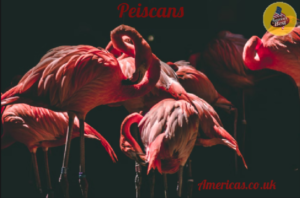Peiscans: Guardians of the Coastline and Their Ecological Role
Introduction
Coastal ecosystems are teeming with biodiversity, playing an essential role in protecting shorelines and supporting marine life.
Among these guardians of the coast are Peiscans, whose influence is critical yet often overlooked.
In this article, we’ll explore what Peiscans are, their contributions to coastal ecosystems, and how their protection could be crucial for the future of our planet.
What Are Peiscans?

Peiscans are organisms specifically adapted to thrive in coastal environments. These species vary widely, including small crustaceans, mollusks, fish, and plant species like seagrasses.
They are intricately linked to the health of coastal regions, performing roles in nutrient cycling, sediment stabilization, and biodiversity support.
Why Coastal Ecosystems Need Peiscans?
Habitat Creation and Biodiversity Support
Peiscans help create habitats for other species, from providing shelter for juvenile fish to contributing to the growth of coral reefs and seagrass beds.
This diversity in habitats attracts a wide range of marine organisms, boosting the biodiversity that makes coastal ecosystems resilient to environmental changes.
Shoreline Protection and Erosion Prevention
By stabilizing the sediment around them, Peiscans play a critical role in protecting shorelines from erosion.
Species like seagrass and certain types of crustaceans contribute to sediment binding, creating natural barriers that help prevent coastal areas from wearing down over time.
Role in Nutrient Cycling
Peiscans are instrumental in maintaining nutrient levels within coastal ecosystems. Through their feeding and waste processes, they help recycle nutrients, ensuring that the coastal food web remains balanced.
This process supports everything from tiny plankton to large marine Pollutionpredators, keeping the ecosystem functional.
Major Threats Facing Peiscans Today
Habitat Destruction
Coastal development, deforestation, and industrial activities have led to significant habitat destruction, reducing the natural spaces where Peiscans thrive.
This loss endangers not only Peiscans but also the broader marine ecosystem that depends on their presence.
Pollution and Contamination
, particularly plastic waste, and chemical runoffs, is detrimental to Peiscan populations.
Many of these organisms are highly sensitive to pollutants, and contamination can disrupt their life cycles, affecting their populations and the health of coastal ecosystems.
Climate Change and Rising Sea Levels
Climate change poses a considerable risk to Peiscans, as it impacts coastal ecosystems through rising sea levels, temperature shifts, and extreme weather patterns.
These changes can disrupt breeding cycles, food availability, and habitat stability for many Peiscan species.
How to Protect Peiscans and Coastal Ecosystems?
Conservation Efforts
Supporting conservation initiatives focused on coastal ecosystems is vital for Peiscans. From marine protected areas (MPAs) to restoration projects that rebuild habitats like mangroves and seagrass beds, every conservation effort helps protect these critical organisms and their ecosystems.
Reducing Pollution
Reducing pollution by adopting sustainable waste disposal and limiting chemical runoffs can protect Peiscans from harmful contaminants.
Community clean-up efforts and eco-friendly products also play an essential role in minimizing environmental impact on coastal regions.
Supporting Sustainable Fisheries
Overfishing can lead to ecological imbalances that negatively affect Peiscan populations. Supporting sustainable fisheries and reducing bycatch are ways to promote balanced marine ecosystems, helping Peiscans and the species that depend on them.
The Future of Coastal Ecosystems with Peiscans
Peiscans represent a delicate yet crucial part of coastal ecosystems. Their role as nutrient recyclers, shoreline protectors, and habitat creators underscores their importance.
By protecting and preserving Peiscans, we can ensure healthier, more resilient coastal environments capable of sustaining marine life and human communities alike.
Conclusion
Peiscans may not be the most well-known creatures in coastal ecosystems, but their contributions are indispensable.
Understanding and protecting these organisms can enhance our coastal ecosystems, preserving their beauty, diversity, and functionality for generations to come.
As we continue to face environmental challenges, recognizing the value of Peiscans could make all the difference in our approach to sustainable coastal conservation.



